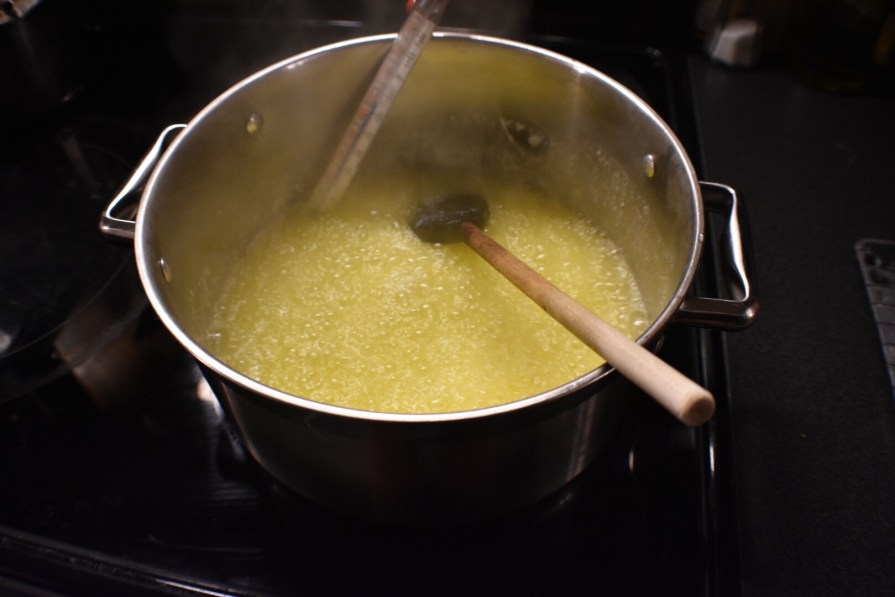What is ghee? It is a clarified butter that’s been cooked longer for a nutty flavor. It contains no water, protein or milk products (lactose or caesin). It’s been used in ayurvedic medicines forever. There’s even a ghee cleanse (though I’ve not tried it). My favorite use of ghee is in my bulletproof coffee.
Ghee has lots of nutritional benefits. Here is a nutritional facts image from the web:

In a keto lifestyle, this high fat is a great energy source. Additionally, vitamin A is good for the immune system among other benefits.
Other nutritional benefits include vitamin K. K2 specifically helps with strong bones. There’s Omega 3 and 6. Ghee also has short chain fatty acids which are digested differently and give off lots of energy. I found an interesting article on HealthLine by Dr. Brown on short fatty acids that isn’t keto specific, but goes into some of the great affects of short fatty acids on health. Ghee is the highest known food with butyric acid we can digest. It helps with inflammation, metabolism, disease prevention, etc. It is also a free for all like coconut oil that can be used internal and external.
Ghee can be purchased at most grocery stores. I’ve found the nutty flavor to be lacking in a lot of brands and started making my own. Here are the steps I follow to make ghee:
Buy butter. Two pounds of butter will make one quart of ghee. I purchase a organic brand from costco.

Cut the butter into cubes. This isn’t a necessary steps, but allows for melting to occur faster.

I added a candy thermometer to this batch so I could let readers know what temperature it cooks to before I take it off the heat.

While butter is melting, have your bowl with strainer and cheese cloth or towel for catching the solids ready.

Let the ghee boil. I usually just leave on medium heat stirring occasionally.
The butter will foam twice. The first time very bubbly. The second time it foams up is when it is almost ready.


On the candy thermometer this was at a hard crack. I smell it until it smells close to caramel or browned butter before I take it off the heat.
Once it is off the heat, you can see the solids browned in the bottom of the pot.
Pour the ghee into the bowl. I normally don’t pour off the solids at the bottom of the pot and just scrap those into the garbage.
The milk solids look pretty gross. My kids holler yuck always when they see this step.
Pour the final product into a jar with a tight lid.

The ghee will be solid when cooled and no need to refrigerate!

Good luck on your first batch of ghee!

